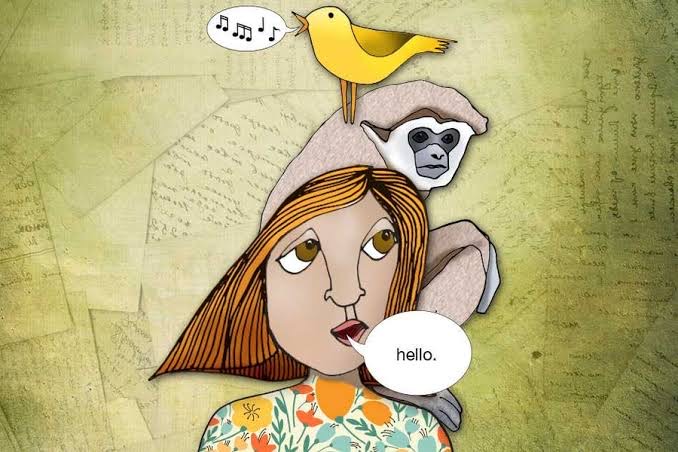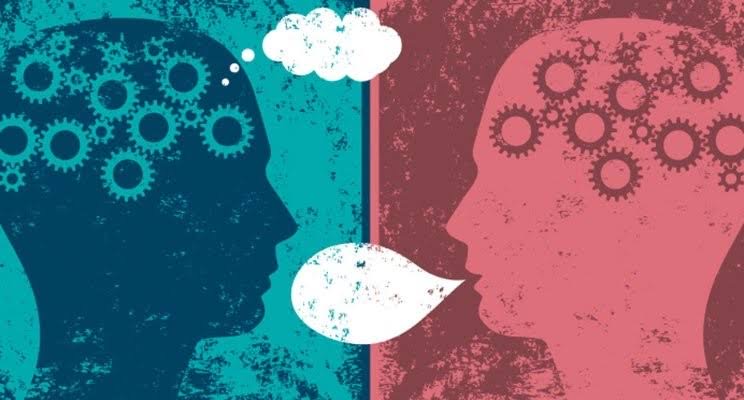TABLE OF CONTENT:
-
Animal Communication Systems
-
The Limits of Animal Communication
-
Human Language and Its Evolution
-
Attempts to Teach Language to Animals
-
The Future of Animal Communication
-
Animals and Human Language Theories: An Overview
Introduction:
From household pets to exotic wildlife, animals have always been an important part of human culture. However, when it comes to language, the relationship between humans and animals becomes more complex. While humans have developed complex communication systems, ranging from spoken language to written language and sign language, animals have their own unique ways of communicating with one another. In this article, we explore the fascinating topic of animals and human language.

Section 1: Animal Communication Systems
Animals have developed their own unique communication systems, which vary greatly between different species. For example, birds use complex songs to communicate with one another, while bees use dance to indicate the location of food sources. Similarly, primates use a combination of vocalizations, body language, and facial expressions to convey information to members of their group.
Section 2: The Limits of Animal Communication
While animal communication systems are impressive, they are limited in their complexity. Animals are generally unable to communicate abstract concepts or engage in the kind of complex reasoning that humans are capable of. For example, while primates may be able to communicate about immediate needs, such as food or danger, they are unable to have philosophical debates or discuss hypothetical scenarios.
Section 3: Human Language and Its Evolution

Human language is a complex and sophisticated communication system that has evolved over thousands of years. Unlike animal communication systems, human language allows us to communicate abstract concepts and engage in complex reasoning. This ability has allowed humans to develop culture, science, and technology, and has set us apart from other species on Earth.
Section 4: Attempts to Teach Language to Animals
Given the complexity of human language, it is perhaps unsurprising that attempts to teach language to animals have met with limited success. While some animals, such as parrots, have been able to learn a limited vocabulary of human words, they are generally unable to use language in the way that humans do. Similarly, attempts to teach sign language to apes have been met with mixed success, with some apes able to use a limited set of signs to communicate with humans.
Section 5: The Future of Animal Communication

While humans are unlikely to ever fully understand the complexities of animal communication systems, advances in technology and our understanding of animal behavior may allow us to better communicate with animals in the future. For example, researchers are currently developing devices that can translate animal vocalizations into human language, which could help us to better understand the needs and behaviors of the animals we share the planet with.
Animals and Human Language Theories: An Overview
Language is a defining characteristic of humans. Our ability to communicate complex thoughts and ideas through language sets us apart from other species on Earth. However, this does not mean that humans are the only animals capable of language. In fact, there is a growing body of research showing that many animals possess some level of language ability. In this article, we will explore the various theories surrounding animals and human language.
The Origins of Language
The origins of human language are still a topic of much debate among linguists and anthropologists. One of the most prominent theories is that language evolved as a tool for social communication. As early humans began to live in larger groups, the need for more complex communication increased. Over time, language evolved to include syntax and grammar, which allowed for even more complex communication.
However, some researchers argue that language may have evolved for other reasons. For example, some suggest that language may have evolved as a tool for thinking, rather than communication. This theory suggests that language evolved as a way to organize our thoughts and make them more precise.
Animal Language
While human language is undoubtedly the most complex form of communication on Earth, it is not the only form of language. Many animals possess some level of language ability. For example, primates such as chimpanzees and bonobos have been observed using sign language to communicate with humans. Similarly, dolphins have been observed using complex vocalizations to communicate with one another.
However, the extent of animal language abilities is still a topic of much debate. Some researchers argue that animals are only capable of simple forms of communication, such as warning calls or mating calls. Others argue that animals possess more complex language abilities, but that we simply do not yet have the tools to understand them.
The Chomskyian View

One of the most influential theories regarding human language is the Chomskyian view. This theory, developed by linguist Noam Chomsky, suggests that human language is innate, rather than learned. According to this theory, humans are born with a "language acquisition device" in their brains that allows them to learn language rapidly and effortlessly.
The Chomskyian view has been influential in the study of language acquisition and has led to a better understanding of how children learn language. However, it has also been criticized for its lack of empirical evidence and for its inability to account for the wide variety of languages spoken around the world.
The Social Interactionist View
Another prominent theory regarding human language is the social interactionist view. This theory suggests that language is learned through social interaction, rather than innate ability. According to this theory, children learn language by interacting with adults and other children and by being exposed to a variety of linguistic inputs.
The social interactionist view has been influential in the study of language development and has led to a better understanding of the role that social interaction plays in language learning. However, it has also been criticized for its inability to account for the rapid pace at which children learn the language.
Conclusion
The study of animals and human language has led to a better understanding of the origins and nature of human language. While human language is undoubtedly the most complex form of communication on Earth, animals possess their own unique forms of language. Theories such as the Chomskyian view and the social interactionist view have helped to shed light on the mechanisms underlying language acquisition and development. However, there is still much to learn about the nature of language and its origins.


You must be logged in to post a comment.